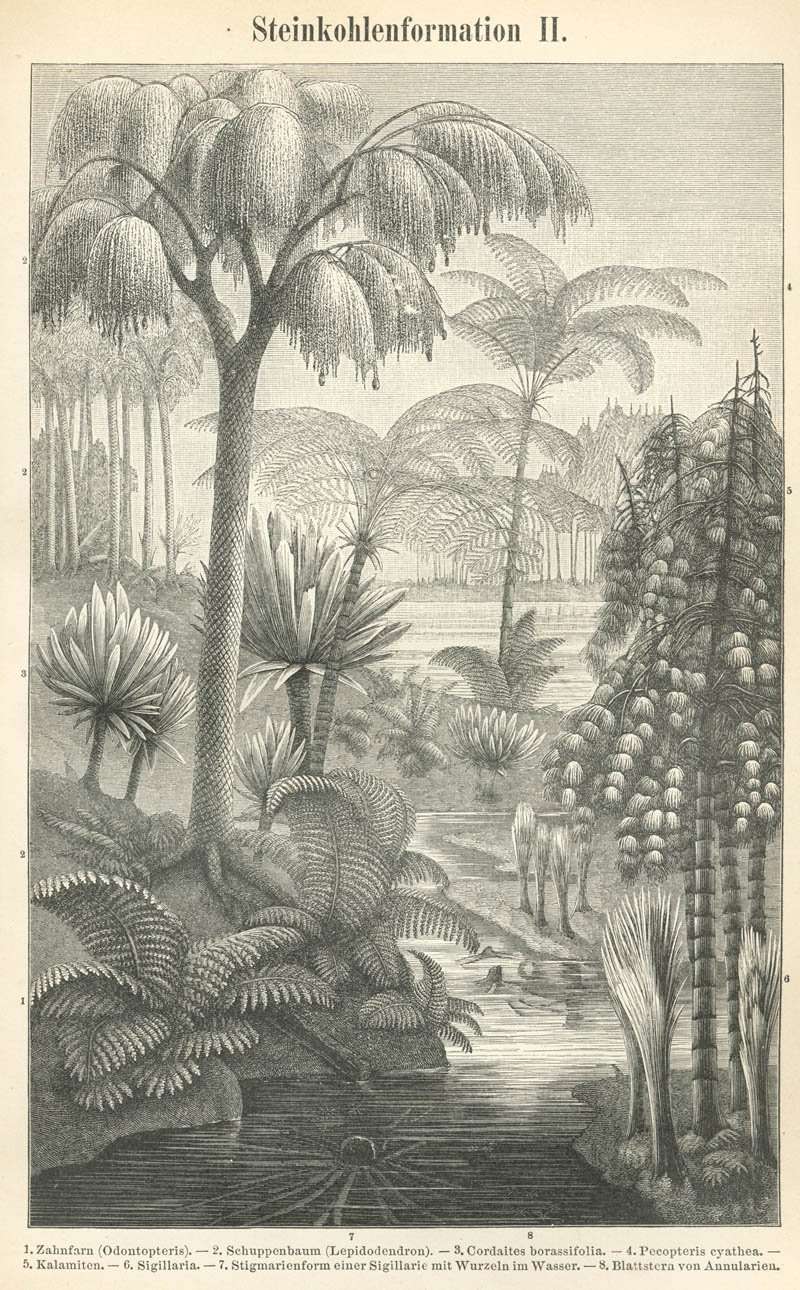By the dawn of the Carboniferous period, plants developed a new kind of support material, called lignin. Lignin was an improvement development over cellulose in several ways: it was harder, more rigid, and, being more complex, almost impossible to digest, which made it ideal for protecting cellulose. With lignin, plants could make wood, and it lead to the first treelike growth form. One of the early founders of these primeval forests was Lepidodendron (from the Greek lepido meaning “scale” and dendron meaning “tree,” so named for the leaf scars that resulted in a scaly trunk). Lepidodendron wasn't a true tree but a member of an early offshoot of the higher plants known as lycopods, today comprised of the much smaller club mosses and quillworts. Based on reconstructions of the fossils, it is estimated that Lepidodendron stood a stately 100 feet tall, putting it at the very top range of the early flora and head and shoulders above many trees that exist today. As the Carboniferous period continued, Lepidodendron and its cousins spanned the tropics in vast forested swamps.
Here is the crux of our problem: lignin made the lycopod trees a little too successful. Because their leaves were lofted above many herbivores and their trunks were made inedible by lignin, lycopods were virtually impervious to harm. They grew and died in vast quantities, and their trunks piled up in swamps, eventually becoming submerged and locking huge quantities of carbon dioxide out of the atmosphere for good in the form of coal. Without any decomposition to recycle this carbon, atmospheric carbon dioxide levels crashed, leading to global cooling and making it much harder for plants to grow. Atmospheric oxygen concentration, in turn, soared to an estimated 35%, much higher than the 20% of modern times.
But why was all this lignin laying around in the first place? Plenty of organisms had found a way to make use of cellulose, so why didn't they jump on this new source of energy that was laying around free for the taking? The are several reasons: first, whereas cellulose was made of glucose, which can be readily converted to energy, lignin was based on phenol, a derivative of benzene, which is only a good energy source when it's on fire. This isn't a solution for your average bacterium. Digesting lignin was so difficult that lycopods had free reign over the planet for over 40 million years, leading to the world's first and only wood pollution crisis. Finally, however, a fungus belonging to the class Agaricomycetes – making it a distant cousin of button mushrooms – did find a crude way to break down lignin. Rather than devise an enzyme to unstitch the lignin molecule, however, it was forced to adapt a more direct strategy. Using a class of enyzmes called peroxidases, the fungus bombarded the wood with highly reactive oxygen molecules, in much the same way one might untie a knot using a flamethrower. This strategy reduced the wood to a carbohydrate-rich slurry from which the fungus could slurp up the edible cellulose.

I_are_facepalm on December 21st, 2017 at 20:36 UTC »
Imagine the wildfires in that oxygen rich environment...
diiejso on December 21st, 2017 at 20:24 UTC »
This confuses me. Were there massive piles of trees growing on top of dead trees? What did the ground look like at this point?
PastelFlamingo150 on December 21st, 2017 at 19:56 UTC »
And that's where coal comes from